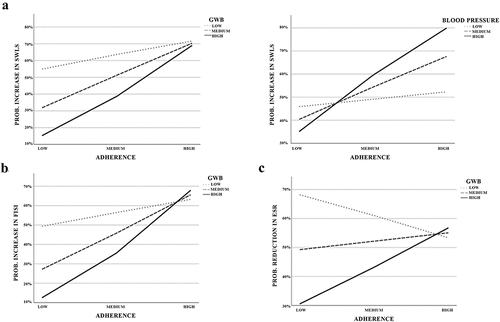Figures & data
Table 1. Tests, questionnaires and biological and physical parameters assessed in the Sing4Health intervention protocol at each testing point. Scores obtained for these variables at pretest comprised the data matrix for the principal component analysis.
Table 2. Retained factors after the PCA decomposition of the pretest data matrix with the psycho-emotional, psycho-social, cognitive, and biological variables, along with the variable names of those with factor loadings above .4 for each factor.
Table 3. Coefficients of the variables included in the final model of the backward multiple regression.
Figure 1. Simple slopes analysis of the moderating effect of the factors predicting adherence on the relationship between the number of sessions completed and the probability of observing the expected change at the end of the intervention in selected outcomes. Lines indicate low (dotted light gray), medium (dashed gray) and high (solid black) levels of the moderator variable. a) Moderation of General Well-Being (GWB, left) and Blood Pressure (right) on the probability of observing an increase in satisfaction with life (SWLS) as a function of adherence levels. b) Moderation of General Well-Being (GWB) on the probability of observing an increase in social identification with the institution (FISI) as a function of adherence levels. c) Moderation of General Well-Being (GWB) on the probability of observing a reduction in low-grade systemic inflammation as indexed by the erythrocyte sedimentation rate (ESR) percentage over maximum normal values as a function of adherence levels.

